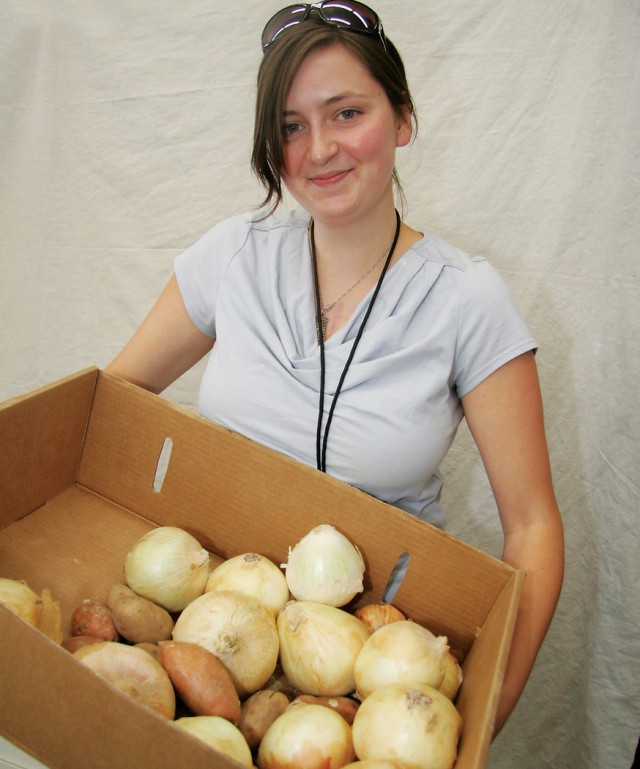
One in six people in Boulder County don’t know where their next meal will come from — but typically that meal won’t include fresh produce. Fruits and vegetables are in high demand in the food bank community, and Garden Against Hunger wants to respond to that need by tapping into the gardening community in Boulder. The project joins a network of other organizations already created to help reduce food waste and feed more of the Colorado residents who are food insecure.
Started in the spring of 2012, Garden Against Hunger is a side project created by Boulder Food Rescue and aimed at feeding the hungry by reducing food waste and providing an alternative to the industrialized food system. Boulder Food Rescue staff have announced plans to expand Garden Against Hunger in its second year, increasing the outreach the organization does and encouraging more gardeners to donate their excess produce to agencies serving those in need.
“Eating local is really important. Growing your own food is really important,” says Hana Dansky, executive director of Boulder Food Rescue. “We’re able to educate and teach people about some alternatives to the [industrialized food system].”
The first tier of the project is educating Boulder gardeners on how and where to donate their excess produce instead of letting it go to waste. Garden Against Hunger also provides seeds to gardeners, encouraging them to grow more food that can then be donated to agencies that provide food to those in need. The organization has set up five drop sites around Boulder for gardeners to donate their excess produce. The Boulder Food Rescue team will collect the donated produce a few times a week from the drop sites and bring it to one of the 50 agencies that Boulder Food Rescue delivers to. Garden Against Hunger sees a variety of produce being donated, but peppers, leafy greens and squashes are the most common donations.
The second priority of Garden Against Hunger is educating Boulder residents about alternatives to the industrialized food system. The system, which separates people from the food they’re eating, is the reason 40 percent of food goes to waste across the United States, Dansky says. The Garden Against Hunger team is also teaching people how to garden at their own plot at Hawthorne Gardens.
Last year, Garden Against Hunger collaborated with Growing Gardens, a nonprofit organization that tries to raise awareness about growing food and organic gardening techniques, to create a drop site and do outreach. The group also collected produce from the farmers’ market and the leftovers that the teenagers involved in the Cultiva Youth Project grow.
“This year we’re just trying to step it up one more notch,” Dansky says. “We’re really trying to get more outreach, more Boulder residents donating food and also more drop sites, more places where they can take food, more farmers’ market gleaning.”
Garden Against Hunger’s produce will go to agencies like Emergency Family Assistance Association, Harvest of Hope Pantry and Boulder Shelter for the Homeless, which provide food to those in need. These agencies, along with many others in Boulder County, receive approximately 60 to 70 percent of their food from Community Food Share, the largest food bank for Boulder and Broomfield counties.
Community Food Share, which is associated with Feeding America, has a nutrition policy in place to encourage healthy eating and better nutrition for those it serves, but the food bank receives 90 percent of the food it distributes from donations, giving it limited control over the food it supplies. Produce from local gardeners is only a small percentage of the total food Community Food Share distributes, but it helps the organization distribute healthier and higher quality food, according to Tom Reed, food procurement manager of Community Food Share.
“A lot of the small gardens around here that garden organically will bring in their extra product to us,” Reed says. “It’s not in huge volumes, but it’s the highest quality stuff that people who shop here will ever get access to.”
The agencies Community Food Share serves see a demand for fresh produce and healthier food. Harvest of Hope Pantry, a faith-based organization that functions as a free supermarket for those with and without kitchens, sees a demand for healthier food from its clients, says executive director Barbara O’Neil. Although the pantry receives some produce from Community Food Share and other donations, produce goes fast, so fruits and vegetables from local gardeners help.
“I’m amazed at what people bring from their gardens,” O’Neil says. “We’ve only been open for a year for the homeless population, and August of last year is when we opened it to the families, so it was really August, September and then into October when we started getting the squash and winter vegetables that we saw just in abundance come in. … They’ll say, ‘Can you please take our carrots?’ Of course we will.”
Emergency Food Assistance Association gives out approximately 700,000 pounds of food to families per year through a supermarket-like set up. Low-income households have a harder time obtaining high quality produce, Dansky says, and EFAA is able to supplement the families’ diets with healthier food. The more fresh produce that the organization receives, the more it is able to offer its clients.
In Denver, residents with fruit trees can email YardHarvest when their trees are ripe, and volunteers from the organization will go to their homes and pick the fruit. The organization typically receives about 100 to 200 pounds of fruit per tree, and YardHarvest delivers that food to charities in the Denver area. In 2012, YardHarvest donated over 3,000 pounds of fruit from Denver residents’ yards to a dozen different charities. Jason Barton, director of operations at YardHarvest, says they have hopes to expand to Boulder within the next few years.
Colorado gardeners looking for other ways to donate their produce can turn to Produce for Pantries. The statewide coalition has put information about where to donate excess produce on the HungerFree Hotline and has partnered with HungerFree Colorado and LiveWell to create a donation guide for gardeners.
Respond: [email protected]














